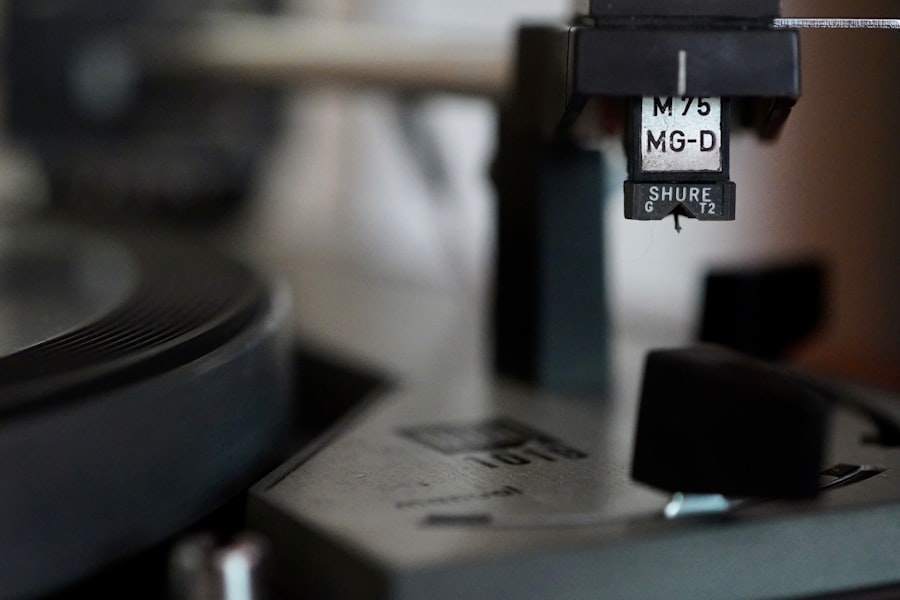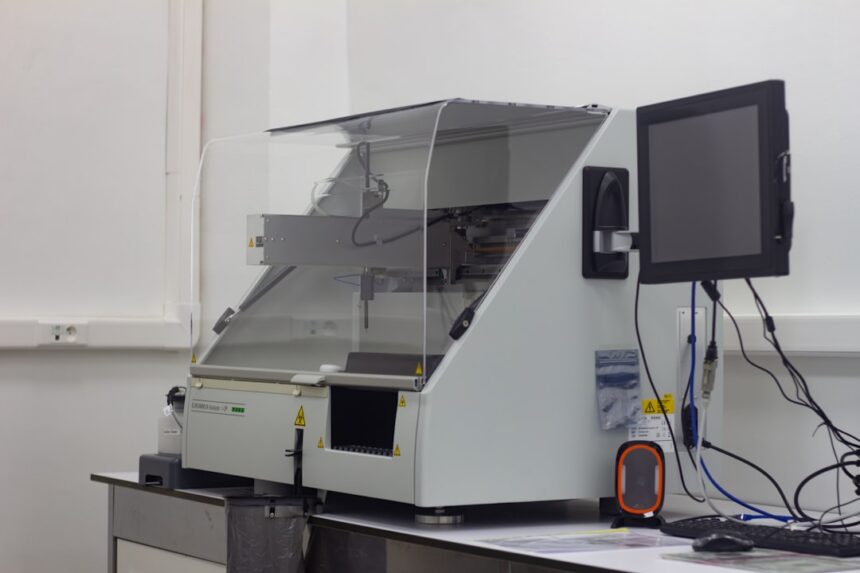The history of printer dot matrix forensics is a fascinating journey that intertwines the evolution of printing technology with the growing field of forensic science. Dot matrix printers emerged in the 1970s as a cost-effective solution for producing printed documents. Unlike their modern counterparts, these printers utilized a series of pins to strike an inked ribbon against paper, creating characters and images through a series of dots.
As these printers became commonplace in offices and homes, they also began to leave behind unique signatures in the form of print artifacts, which would later become crucial in forensic investigations. As the digital age progressed, the need for forensic analysis of printed materials became increasingly apparent. Law enforcement agencies and forensic experts recognized that dot matrix printers could provide valuable evidence in criminal cases.
The distinct patterns and characteristics of printed documents could be linked back to specific printer models or even individual machines. This realization marked the beginning of a new branch of forensic science, where the analysis of printed materials became an essential tool in solving crimes and uncovering the truth behind various incidents.
Key Takeaways
- Printer dot matrix forensics has a rich history dating back to the 1980s, when dot matrix printers were widely used for document printing.
- Understanding the technology behind dot matrix printers is crucial for forensic investigators, as it helps in identifying and analyzing printer dot matrix artifacts.
- Printer dot matrix forensics plays a significant role in criminal investigations, as it can provide valuable evidence in cases involving forged documents or counterfeit currency.
- Techniques for extracting and decoding printer dot matrix data are essential for forensic investigators to uncover hidden information and track the origin of printed documents.
- Legal and ethical considerations are important in the use of printer dot matrix forensics, as it involves the handling of sensitive information and privacy concerns.
Understanding the Technology Behind Dot Matrix Printers
To appreciate the significance of dot matrix forensics, it is essential to understand the technology that underpins these printers. Dot matrix printers operate using a print head that moves horizontally across the paper while simultaneously striking pins against an inked ribbon. Each pin creates a dot on the paper, and by controlling the movement of the print head and the timing of the pin strikes, the printer can produce letters, numbers, and images.
This method of printing is distinct from modern inkjet or laser printers, which utilize different technologies to achieve higher resolutions and faster printing speeds.
This capability made them particularly popular in business environments where multiple copies of a document were required.
However, this technology also left behind unique artifacts that forensic experts could analyze. The arrangement of dots, the spacing between characters, and even the wear patterns on the print head can provide critical information about the printer used and its operational history.
The Role of Printer Dot Matrix Forensics in Criminal Investigations

In criminal investigations, printer dot matrix forensics plays a pivotal role in establishing connections between suspects and evidence. When a printed document is found at a crime scene, forensic experts can analyze it to determine its origin. This process involves examining the specific characteristics of the print, such as dot density, alignment, and even the type of ink used.
By comparing these features with known samples from suspect printers, investigators can often link a document back to a particular machine. Moreover, dot matrix forensics can help establish timelines in criminal cases. For instance, if a suspect claims they were not present at a crime scene but a document printed on their dot matrix printer is found there, it raises questions about their alibi.
The analysis can reveal when the document was printed, providing crucial evidence that may contradict a suspect’s statements. In this way, dot matrix forensics serves as a powerful tool for law enforcement agencies seeking to piece together the events surrounding a crime.
Identifying and Analyzing Printer Dot Matrix Artifacts
| Printer Dot Matrix Artifacts | Metrics |
|---|---|
| Resolution | Number of dots per inch (DPI) |
| Print Speed | Characters per second (CPS) |
| Noise Level | Decibels (dB) |
| Print Head Type | Impact or non-impact |
Identifying and analyzing printer dot matrix artifacts requires a keen eye and specialized knowledge.
They look for unique patterns created by the dot matrix printing process, such as variations in dot size and spacing.
These patterns can be influenced by factors like printer maintenance, ink quality, and even environmental conditions at the time of printing. In addition to visual analysis, forensic experts often employ advanced imaging techniques to enhance their examination of printed documents. Techniques such as digital microscopy can reveal minute details that are not visible to the naked eye.
By capturing high-resolution images of the print artifacts, experts can analyze them more thoroughly and compare them against databases of known printer characteristics. This meticulous process allows them to build a comprehensive profile of the printer used, which can be instrumental in linking evidence to suspects or establishing timelines.
Techniques for Extracting and Decoding Printer Dot Matrix Data
Extracting and decoding data from dot matrix printers involves several techniques that forensic experts have developed over time. One common method is to use software tools designed to analyze print artifacts and extract relevant information from them. These tools can identify specific patterns associated with different printer models and help forensic analysts determine which machine produced a given document.
Another technique involves examining the physical properties of the printed material itself. For example, forensic experts may analyze the ink used in dot matrix printing to determine its chemical composition. By comparing this information with known samples from various ink manufacturers, they can gain insights into the printer’s origin.
Additionally, examining the paper type and any unique markings or features can further aid in identifying the source of a printed document.
Case Studies: How Printer Dot Matrix Forensics Has Been Used in Real-Life Investigations

Real-life case studies illustrate the practical applications of printer dot matrix forensics in criminal investigations. One notable example involved a fraud case where counterfeit checks were produced using a dot matrix printer. Forensic experts were able to analyze the unique print patterns on the checks and link them back to a specific model of printer used by the suspect.
This evidence played a crucial role in securing a conviction. In another case, law enforcement agencies investigated a series of threatening letters sent to public officials. By examining the printed letters, forensic analysts identified distinctive characteristics that pointed to a particular dot matrix printer model.
This information helped narrow down potential suspects and ultimately led to an arrest. These case studies highlight how printer dot matrix forensics can provide critical evidence that aids in solving crimes and ensuring justice.
Legal and Ethical Considerations in the Use of Printer Dot Matrix Forensics
As with any forensic discipline, legal and ethical considerations play a significant role in printer dot matrix forensics. The admissibility of evidence obtained through this analysis must adhere to established legal standards. Forensic experts must ensure that their methods are scientifically valid and that their findings can withstand scrutiny in court.
Ethical considerations also come into play when handling sensitive information derived from printed documents. Forensic analysts must maintain confidentiality and ensure that their work does not infringe upon individuals’ rights or privacy. Balancing the need for justice with ethical responsibilities is paramount in ensuring that printer dot matrix forensics is conducted with integrity.
Challenges and Limitations of Printer Dot Matrix Forensics
Despite its usefulness, printer dot matrix forensics faces several challenges and limitations. One significant challenge is the variability inherent in printing processes. Different printers may produce similar artifacts, making it difficult to definitively link a document to a specific machine without additional corroborating evidence.
Additionally, older dot matrix printers may no longer be in use, complicating efforts to obtain reference samples for comparison. Another limitation is the potential for tampering or alteration of printed documents. Criminals may attempt to modify or forge documents to obscure their origins, making it challenging for forensic experts to draw accurate conclusions from their analysis.
As technology continues to evolve, staying ahead of these challenges will require ongoing research and adaptation within the field of printer dot matrix forensics.
The Future of Printer Dot Matrix Forensics: Advancements and Innovations
Looking ahead, the future of printer dot matrix forensics holds promise for advancements and innovations that could enhance its effectiveness. As technology continues to evolve, new imaging techniques and software tools are being developed that can improve the accuracy and efficiency of forensic analysis. These advancements may enable forensic experts to extract more detailed information from printed documents than ever before.
Furthermore, collaboration between forensic scientists and technology developers could lead to innovative solutions for addressing current challenges in dot matrix forensics. By leveraging artificial intelligence and machine learning algorithms, analysts may be able to identify patterns and anomalies more quickly, streamlining investigations and improving outcomes in criminal cases.
Training and Education for Forensic Investigators in Printer Dot Matrix Analysis
To ensure that forensic investigators are equipped with the necessary skills for analyzing printer dot matrix artifacts, training and education programs are essential. Specialized courses focusing on printer technology, forensic analysis techniques, and legal considerations can provide investigators with a comprehensive understanding of this field. Additionally, hands-on training opportunities that allow investigators to work with actual print samples can enhance their practical skills.
By fostering collaboration between experienced forensic analysts and those new to the field, we can create a knowledgeable workforce capable of effectively utilizing printer dot matrix forensics in criminal investigations.
Resources and Tools for Conducting Printer Dot Matrix Forensics
A variety of resources and tools are available to assist forensic investigators in conducting printer dot matrix forensics effectively. Software programs designed specifically for analyzing print artifacts can streamline the process of identifying printer characteristics and extracting relevant data from printed documents. Moreover, access to databases containing information about different printer models and their unique print patterns can aid investigators in making accurate comparisons during their analyses.
By leveraging these resources and tools, forensic experts can enhance their capabilities and improve their contributions to criminal investigations involving printed materials. In conclusion, printer dot matrix forensics represents an essential intersection between technology and criminal justice. As I reflect on its history, applications, challenges, and future prospects, I am reminded of its critical role in uncovering truths within complex investigations.
Through continued advancements in technology and education within this field, I believe we can further enhance our ability to utilize this powerful tool in pursuit of justice.
Dot matrix printer forensics is a fascinating field that delves into the unique characteristics of printed documents to trace their origins and verify authenticity. This niche area of study can be crucial in criminal investigations and document verification processes. For those interested in exploring more about the intricacies of printer forensics, a related article can be found on the website “Am I Wrong Here?” which provides insights into various forensic techniques and their applications. You can read more about it by visiting this link.
FAQs
What is printer dot matrix forensics?
Printer dot matrix forensics is the process of analyzing the dot matrix printing technology used in printers to gather evidence for forensic investigations. This can include examining the unique patterns and characteristics of dot matrix printing to identify specific printers or to detect tampering or forgery.
How is printer dot matrix forensics used in investigations?
Printer dot matrix forensics can be used in investigations to analyze printed documents for authenticity, to identify the source of a document, or to detect alterations or forgeries. By examining the specific patterns and characteristics of dot matrix printing, forensic experts can gather valuable evidence for a case.
What are some of the characteristics of dot matrix printing that can be analyzed in forensics?
In printer dot matrix forensics, experts can analyze characteristics such as the spacing and arrangement of dots, the density of the printed dots, the alignment of the dots, and any unique features or flaws in the printing process. These characteristics can be used to identify specific printers or to detect tampering or forgery.
What are the limitations of printer dot matrix forensics?
While printer dot matrix forensics can be a valuable tool in investigations, it does have limitations. For example, the quality and resolution of dot matrix printing may not always provide clear and definitive evidence. Additionally, advancements in printing technology and the availability of different printer models can make it challenging to identify specific printers based on dot matrix characteristics alone.
What are some other forensic techniques used in conjunction with printer dot matrix forensics?
In addition to printer dot matrix forensics, forensic experts may also use techniques such as ink analysis, paper analysis, handwriting analysis, and document examination to gather comprehensive evidence in investigations involving printed documents. These techniques can provide additional insights and support the findings from printer dot matrix forensics.




